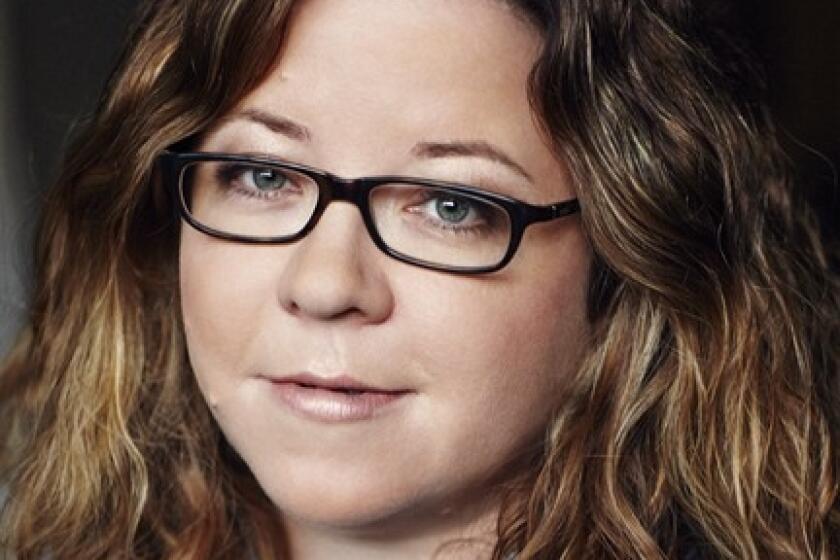With ‘Colored Television,’ Danzy Senna gives us a laugh-out-loud cultural critique

- Share via
Book Review
Colored Television: A Novel
By Danzy Senna
Riverhead: 288 pages, $29
If you buy books linked on our site, The Times may earn a commission from Bookshop.org, whose fees support independent bookstores.
“Colored Television” is a novel about capitalism, race, gender, parenthood, creativity and yearning; it is, in short, a Great American Novel.
That’s a breathless way to start a review, but Senna’s story, set in Los Angeles, is also about the perpetual divide between commerce and art, and the novelist’s deft handling of all these multiple themes deserves such praise.
In Kailee Pedersen’s debut, generational pain and malice rule the narrative, with elements of the supernatural woven in.
The author’s comical rendering of the travails of Jane – her Gen X, mixed race, financially vulnerable, creative writer protagonist – brilliantly portrays 2020s America, where multiple identities are not only intersectional but in constant flux and available to be donned as fashionable costumes or claimed by anyone seeking their cachet.
Senna’s mastery of writing shines throughout “Colored Television.” Critical categories insist that farce is a lower form of humor than satire, but that’s just another form of the kind of artificial gate-keeping whose tensions run through “Colored Television.” Senna’s humor mixes with her deep understanding of cultural foibles and the human heart to produce a novel that is simultaneously a laugh-out-loud cultural comedy and a riveting novel of ideas.
In the short stories of ‘Highway Thirteen’ that span almost 80 years, Fiona McFarlane explores the lives of people affected by a spree of killings in Australia.
Jane and Lenny have been a pair since their meeting years before in New York, when Jane was directed by a fortune teller to look for “a Black man who was funny — a Black man who would be wearing ‘West Coast’ shoes.” Lenny sports a funny T-shirt and a pair of Vans.
“On one of their first dates … Jane said Lenny was Caviar Black … that he was born a rich black kid. Lenny said Jane was Pinky Black. As in the kind of Black you can’t see unless you’re squinting.” Being afraid that she would end up as a “mulatto spinster” was what had driven Jane to accept her sister’s gift of the session with a psychic in the first place.
Of all of Jane’s multiple identities, Gen X-ness is the most “indisputable.” And “what made her most Gen X of all was that she was part of the first baby boom of mulattos, whose parents were of the first generation of legalized interracial marriages.”
“Like any Black Gen Xer, she hadn’t had time to worry about microaggressions, what with the good old macroaggressions she’d experienced: white kids throwing rocks at her head,” plus racist slurs and objects left on the family’s porch. But Jane never doubted she was Black, that “she ‘d been lucky to be raised in the early days of mulatto militancy… . Black was the thing to be.”

In grad school, Jane bonded with her friend Brett, another child of mixed-race, divorced parents. They both started out writing literary novels, but then Brett opted to pursue a highly successful career in Hollywood. Lenny and Jane are staying in Brett’s luxury L.A. home while he is overseas for a year.
Brett tells Jane that he hopes to make a personal TV show, “with two halfie leads … when race came up at all, it would be more an impetus for humor than something tortured and heavy.” But would such a show contribute to another friend’s sense that multiracial families are a substance-less fad, just another monetized marketing angle in glitzy Hollywood?
Jane and Lenny, meanwhile, struggle to survive as a creative couple. Jane works as a non-tenured professor and writes in moonlight hours. Lenny’s refusal to make what is judged to be authentic “Black art” keeps his art mostly unnoticed.
Parenting takes up much of Lenny’s and Jane’s life as a couple. Despite resenting her youth spent going back and forward between divorced parents, Jane sees her own children being raised in a form of itinerancy, following their parents from house-sitting gigs to cheap apartments.
When her second novel — a sprawling, multigenerational saga that Lenny calls a “Mulatto ‘War and Peace’ ” — is rejected by her agent, Jane confronts the age-old question of how a wife and mother can find time to make art. “The thing about being a woman, a mother, a wife, was that if you wanted to be any more than those things you had to hire another wife. Someone had to be the wife in the family.”
Senna’s sharp observations of wealth, class and race chisel away at the amorphous rock under which the couple are trapped.
In Los Angeles, as Lenny struggles with art categories, Jane wants a settled place for her kids and a silencing of the loud hum of financial insecurity. The irony of race and class is that striving to be middle class is seen by the white majority as a desire to become white. Jane’s father tells her that “Black people didn’t want to be white … they only wanted to have what white people had.” Race and money, he says, are so mixed up that white people do not understand them.
Grieving the loss of 10 years’ work on the rejected novel, Jane panics and seeks to follow Brett into a job in compromised-filled Hollywood. When she gets hired to develop a television series about a mixed-race family, she keeps it a secret from Lenny, who is not driven by the same economic fears and would object to her “selling out.” Sure enough, as she works on the new writing project, Jane watches as her identity as literary author slips away.
The complexity of all of these issues contained in a single novel might have intimidated a lesser writer. Senna turns what could have been heavy into a celebratory triumph filled with joy and love. The Great American Novel moniker got retired after it became clear its main concerns were those of white men. In “Colored Television,” Senna lays claim to the mantle. This is the New Great American Novel, and Danzy Senna has set the standard.
Lorraine Berry is a writer and critic living in Oregon.
More to Read
A cure for the common opinion
Get thought-provoking perspectives with our weekly newsletter.
You may occasionally receive promotional content from the Los Angeles Times.












